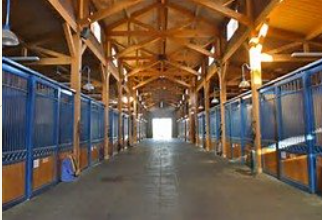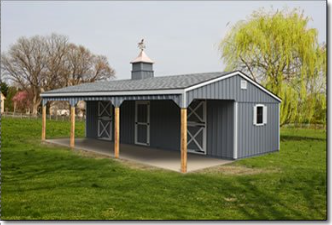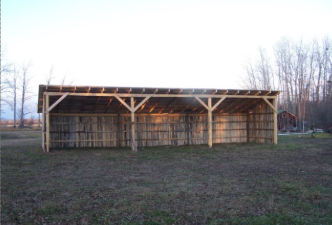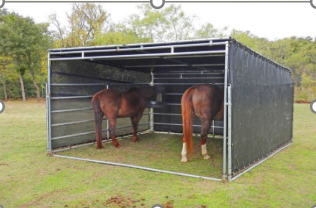EQUINE MIDTERMS PT1
1/86
There's no tags or description
Looks like no tags are added yet.
Name | Mastery | Learn | Test | Matching | Spaced |
|---|
No study sessions yet.
87 Terms
Foundation gait
Four - beat gait where each foot hits the ground independently
Pattern of this gait maybe as follows:
right hind, right front, left hind, left front or
right front, left hind, left front right hind
Walk
Two - beat diagonal gait where the legs work in paired diagonals
Pattern of this gait maybe as follows:
right hind and left front then left hind and right
front or
left hind and right front then right hind and left
front
Trot
Three-beat gait where one pair of feet strike the
ground simultaneously and the other two feet
land independently
Right or left lead
Right lead: left hind, right hind and left front
then right front
Left lead: right hind, left hind and right front
then left front
Horses on right lead when circling to the right and left lead when circling to the left
Canter
Appears to be only a faster but actually a different
gait containing four beats
Also has a right and left lead
Left lead: right hind, left hind, right front, left
front
Right lead: left hind, right hind, left front, right
front
Gallop (Run)
a. Running walk
b. Slow gait
c. Pace
d. Rack
Natural to specific breeds of horses (gaited horses):
Tennessee Walking Horse, Missouri Fox Trot, five-
gaited American Saddlebred Horse: animated walk,
trot, slow gait, rack and canter; Standardbred Horse
driven in harness racing and compete as
trotters (2-beat diagonal) or pacers (2-beat lateral
Artificial Gaits
The fast ground-covering walk of the Tennessee Walking Horse
It is an artificial gait that is faster than the normal walk
The horse moves with a gliding motion as the hind leg oversteps the forefoot print by 12-18 inches or more
Running Walk
This four beat lateral gait is also known as the stepping pace.
In this gait, the horse performs a broken pace, with the hind and front leg on the same side leaving the ground and landing at slightly different times.
The slow gait is performed by the five-gaited Saddlebred
Slow Gait
A lateral two-beat gait in which the right front and rear feet hit the ground in unison and the left front and rear feet hit the ground in unison
There is a swaying from right to left when the horse paces
Pace
A snappy four-beat gait in which the joints of the legs are highly flexed
The forelegs are lifted upward to produce a flashy effect
This is an artificial gait, whereas the walk, trot, pace, gallop and canter are natural gaits
The rack is popular in the show-ring for speed and animation
Rack
A Four-beat gait
Each of the four feet strike the ground separately from the other
Walk
A rapid, diagonal, two-beat gait in which the right front and left rear feet hit the ground in unison, and the left front and right rear feet hit the ground in unison
The horse travels straight without swaying sideways when trotting
Trot
A fast three-beat gait
Depending on the lead, the two diagonal legs hit the ground at the same time
The other hind leg and foreleg hitting at different times
Canter
The fastest gait with four beats
Gallop
For healthier and more attractive coats
To avoid chafing and rubbing of dirt and other materials which can cause sores
To prevent dirt into horse tack
For handler to check for injuries and good way to gain trust of the animal
Grooming
round tool with short teeth made of plastic or stiff rubber
- used to loosen dirt, hair and other detritus
- stimulates skin to produce natural oils
Curry comb
stiff-bristled brush used to remove dirt, hair and other materials stirred up by the curry
- best quality brushes made up of stiff natural brushes such as rice stems and plastic bristled dandy brushes
Dandy brush
soft-bristled brush which removes fine particles and dust
- natural brushes made up of boar bristles and soft, synthetic fibers like human hairbrushes
Body brush
Soft face brush
horses with short, pulled manes combed with wide-toothed plastic or metal comb
- horse tails and long manes maybe finger- combed or brushed with dandy brush or body brush or suitable human hairbrush
Mane brush or comb
metal or plastic tool to remove excess liquid from the horse’s coat
Sweat or water scraper
terry towel cloth or other types of cloth
- sometimes called stable rubber
Towel or grooming rag/rub rag
clipping short “bridle paths” behind the ears where a few inches of mane is removed to help bridle lay more neatly
- also at the fetlock where extra hair can collect undesired amounts of mud and dirt
Electric clippers/scissors
often applied to horse after grooming
Insect repellent or fly spray
iece of equipment or accessory equipped on horses in the course of their use as domesticated animals
Saddles, stirrups, bridles, halters, reins, bits, harnesses, martingales, breastplates
Equipping horse referred to as tacking up
Horse Tack
seats for the rider
- fastened on the horse’s back by means of a girth (English) or cinch (US) which goes around at point about 4 inches behind forelegs
Saddles
support for the rider’s feet that hang down on either side of the saddle
- provides stability for the rider but can have safety concerns due to potential for rider’s feet to get stuck in them
Stirrups
bridles, hackamores, halters, headcollars
- strapped around the horse’s head for control and communication with the animal
a. Halters – halter (US), headcollar (BI) consists of noseband and headstall that buckles around the horse’s head and allows it to be led or tied
- lead rope separate, 6-10 ft for leading and tying or up to 25 ft for leading pack horses or grazing
- stallions may have chain attached to the lead rope and placed over the nose or under the jaw to increase control provided by halter
Headgears
have a bit attached to reins, used for riding or driving horses
Bridles
cavesson style nose band, reins buckled to one another
- little adornment or flashy hardware
English bridles
– no noseband and made of thin leather
- have long separated split reins or shorter closer reins
- often adorned with silver or other decorative features
Eastern bridles
English type that uses 2 bits in the mouth (snuffle and curb)
Double bridles
headgears utilizes heavy noseband rather than a bit
- more often used to train young horses, in Western riding
- Spanish word jaquina
- Western riding, endurance riding, English riding disciplines such as show jumping
Hackamores
special type of halter or noseband for longeing a horse
Longeing cavesson (UK lungeing)
is an activity of having a horse walk, trot and/or canter in a large circle around a handler at the end of a rope that is 25-30 ft. long, for training and exercise
longeing
leather straps or ropes attached to the outer ends of a bit and extend to the rider’s or driver’s hands
- means by which horse rider or driver communicates directional commands to the horse’s head
Reins
device placed in a horse’s mouth, kept on the horse’s head by means of a headstall
- mouthpiece does not rest on the teeth but on the gums or the bars of the horse’s mouth in the interdental space between the front incisors and the front of the back molars
- style of bit appropriate for horse’s needs, fitted properly and be as comfortable as possible
Bits
1. Curb bit
2. Snaffle bit
3. Pelham bit
4. Weymouth or double bridle bit
Basic Styles of Bit
1. Direct pressive bit – snaffle bits
2. Leverage bits – curb bits
Two Categories of Bits
act with direct pressure on the tongue and lips
- have a single jointed mouth piece and act with a nutcracker effect on the bars, tongue and roof of the mouth
- any bit that operates only on direct pressure is snaffle bit
Snaffle bits
have shanks coming off the mouthpiece to create leverage that applies to the poll, chin groove and mouth, in category of curb bits
- any bit that works off of leverage is curb bit regardless if solid or jointed
Leverage bits
sets of devices and straps that attaches a horse to a cart, carriage, sledge or any other load
Harness
1. Breast strap
2. Collar and hanes
Types of Harness
has a wide leather strap going horizontally across the horse’s breast, attached to the traces and then to the load (for lighter load)
Breast strap
harness has collar around the neck with wood or metal hanes in the collar
- traces attached from hanes to load (for heavy draft work)
Collar and Hanes
- breastplates, breastcollars or breastgirths attached to front of saddle, cross the horse’s chest and have the strap run between the horse’s front legs and attaches to the girth -> keeps the saddle from sliding back or sideways
- safety equipment for English riding activities such as show jumping, polo, fox hunting and in Western riding events such as rodeo
Breastplates and martingales
piece of equipment to prevent the horse from raising its head too high
- prevents horse from avoiding rider commands or to keep horse from tossing its head high and hard enough to smack its rider in the face
- attached to center chest ring of breastplate or attached by 2 straps: one that goes around the neck and one that attaches to the girth with the martingale beginning at point where neck and girth straps intersect
Martingales
German martingale or Market Harborouh
Irish martingale
. Running martingale – adds leverage to the bit
4. Standing martingale – one strap runs from girth to chest or attaches to noseband of bridle
Types of Martingale
Horses evolved to live in prairie grasslands and covered long distances undeterred by artificial barriers -> accidents
Smaller areas needs more visible and substantial space
Unlike ancient horsemen who were limited to sticks and stones to enclose their horses, we benefit from a wide variety of traditional and modern materials from which to choose.
Unfortunately, despite over years of development, there's still no ideal fence for every horse-keeping purpose. Each fence choice involves balancing safety concerns with aesthetics, cost, and maintenance.
FENCES
Building codes ultimately determine fencing requirements but some general rules of thumb apply nearly everywhere.
Field fences should be 54 to 60 inches above ground level. Go with a 5-feet minimum height where fences abut highways or anywhere that an escaped horse can flee your premises.
Six feet is the safe minimum height for stall runs and paddocks.
At bottom, an opening of 8 to 12 inches will keep feet and legs from getting trapped, and also prevent foals
from rolling under the fence. Fence openings should be either large enough that a hoof, leg, or even the head can't become trapped, or very small (no more than 3 inches by 3 inches) to prevent a hoof from getting through.
To maintain tension, most wire fences require triangular shaped bracing at the corners and at intervals of about 1/8 mile. The acute angles formed by brace wires represent entrapment hazards if the horse can reach them; good design (such as boards used in corners to block access) can prevent injury, even death.
Visibility, especially with wire fencing, is too often overlooked. While a white plank fence of wood or PVC is easily seen by horses, wires can almost be invisible when
a horse panics. Improve visibility to wire fences by adding a top rail of wood; PVC; or durable white vinyl fence ribbon, either standard or electrified. This makes a wire fence more visible and also deters horses from reaching over the fence to graze.
Regardless of fence material and design, one of your goals should be to present a smooth side to the horses. Exposed posts can injure a horse that runs down the fence line. In such cases, using an electric fence wire to create a psychological as well as a physical barrier offers a safe solution.
Corners also present problems, especially if you plan to pasture horses that don't get along well. Any corner can create an entrapment situation where one horse is bullied. The problem is especially bad when the corner angle is acute (90 degrees or less). Some solutions include corners that curve. This requires placing wire fence barriers on the outside of the posts, but this is less of a problem in corners than it is along straight runs. Another solution is to affix planks across corners to block access.
Horse Fence Safety
Should be safe and adequate – horses allowed as much outside, free exercise as much as possible
Should be sturdy especially when horses lean or rub against it
Should be at least 5 ft high – foals and miniature horses Ponies should be discouraged from rolling or getting caught underneath the fence
Characteristic of a Good Fence
Types of Fencing
Barbed wire often used but the most dangerous fencing material even in large pastures
Can cause severe injuries and lasting scars
Wire fences can be supported by strand of electric fence
At least 4-5 strands for proper security -> kept tight and must be visible -> add top rail of wood
Wire
Made of synthetic materials with fine wires interwoven throughout with plastic posts -> visible and inexpensive fenceGood for dividing grazing area but not as boundary fence
Comes as wire, rope or webbing –> carries mild shock but does not cause injury to animals and people
Inexpensive and easy to install but if electricity fails, easily broken -> excellent temporary fence to keep horses away from fencing
In residential areas warning should be posted
Electric fence
Classic form, either painted as planks or natural round rails
One of the safest -> best option for small paddocks, pens, corrals and pasturesExpensive, high maintenance, not completely without safety concerns -> splinter, nails, lacerations
Wood
More expensive, safer, low maintenance
Wood-like synthetics
Combined with top rail, pipe or wood
Reasonably safe but should be kept tight -> cannot be easily cut by humans
Less expensive than wood or pipe
Cable
Fairly safe, most expensive, low-maintenance and strong
Will not break but potential injury
Most suitable for small areas
Metal pipes
Brick or fieldstone
High visibility, durability, strength, safety
Expensive -> labor and takes longer to build
Solid masonry fence
Can be indoor or outdoor or both
Type dictated by use of horse on day-to-day basis and preference of owner
Unless adequate pasture for horse all the time, housing must restrict access to pasture
Horses must be protected from inclement weather
HOUSING
Safety – electricity, doors, floors, fires
Location
Climate
Zoning
Water
Ventilation
Feed storage
Tack storage
Financial cost
Considerations when Designing Barns
ideal for horses being ridden or used everyday
buildings either barns or stables
requires considerable amount of daily labor for manure removal -> horse generates approx. 15lbs or 6.8 kg of manure and several gallons of urine each day
single story barns best options since cheaper to build and maintain
Indoor Housing
Miniature horse – 6x8 ft
Ponies and small horses under 900 lbs – 10x10 ft stalls or if more room 10x12 ft or 12x12 ft
Riding horses 900 to 1100 lbs – 12x12 ft
Warmblood or small draft – 12x14 ft to 14x14 ft
Large draft horse – 16x16 ft
Foaling stalls – at least twice the size of a single stall for that size of the horse
Recommended Size for Box Stalls
5-6 x 8-10 ft stalls
where horse is tied forward with a chain or a rope -> horse can also stand loose with 2 chains across the open end
draft horses usually kept in standing stalls
not as comfortable -> use rubber mats to provide cushioning for the legs and use less bedding
horse can spend 22 hours per day in stall
Standing Stalls
Indoor Housing
most costly but all around most comfortable choice for housing horses
classic horse barn has stalls along the sides and a wide center aisle, a tack room and storage for feed and hay
box stalls at least 8 ft high, 10 x 10 ft, with 4-ft wide door
center aisle should be wide enough for 2 grooms and 2 horses to pass each other
Horse Barn/Stall
good to use if you want to maintain horses in open air while providing protection from inclement weather
used to house a group of horses that get along well with each other
Open-sided or free-stall housing
similar to box stalls in a row but doors are open to the outdoors most doors are Dutch doors, split to allow the top half to be left open for ventilation purposes -> works best in mild climate
Open Shed Rows
dirt floors cannot be washed down
wood floors overtime will rot due to urine and manure
concrete hard on horse’s legs, should be covered with rubber mat and deep layer of bedding
Barn Floors
one of the cheapest and most commonly available
- easy to dispose of and provides good drainage
straw
more readily available than straw but cost rise when housing market falls
c. hemp – easily obtainable and reasonably priced in some countries
wood products is most economical in areas where lumber is processed
highly effective but only for a few stalls
- not economical purchase for a large barn
peat moss
shredded paper/cardboard
in areas near beer breweriesgood, affordable bedding material
rice hulls
use less bedding
stall mats
easier to work in a well-lighted barn and there will be fewer flies
windows and skylights provide natural lights but be careful they do not let in unrelenting summer sun
Lighting
given fresh and clean everyday
Ventilation
open and fresh air
Feed and Water Supply
Tack Room
also medicine room
keep grains and feeds in a closed container
not accessible to vermins
Feeds Room
lower construction cost and less labor cost when it comes to cleaning
feed horses at least 150 meters away from barn to cut back on manure
horses fight less for feed in an open area
Outdoor Housing
three-sided building in a horse pasture that provides protection from wind, rain and snow
horses must be able to access the shelter, water trough and feed bins at will
ideal is 12 x 12 ft space for each horse, 12 x 24 ft for every two horses
with open front, consider prevailing wind and position the building’s opening away from the wind -> utilize existing wind breaks such as trees and other buildingseasy access to building to bring in water, feed or vehicle
elevated level to allow water to flow away from building
easy access to building to bring in water, feed or vehicle
elevated level to allow water to flow away from building
Run-in shelter
positioned whenever needed, relocated for summer shade, warmth when cold and shifted in cases of seasonal flooding
very inexpensive shelter option that can be pre-built or reconstructed on-site
not good choice for areas prone to severe windstorms
minimum of 10 x 10 ft, 12 x 12 ft better
Portable Shed
1.Gauze and leg wraps
2. Cold packs
3. Duct tape
4. Thermometer
5. Stethoscope
6. Scissors, forceps, tweezers
7. Flashlight
8. Twitch
9. Pliers and cutters
10. Splint materials
11. Wound scrub and ointment
12. Isopropyl
13. Poultice
14. Epsom salt
15. Clinch cutter and shoe puller
16. Syringes
Medicine and Supplies

Horse Barn/Stall

Open Sided or Free-stall Housing

Open Shed Rows

Run-in Shelter

Portable shed